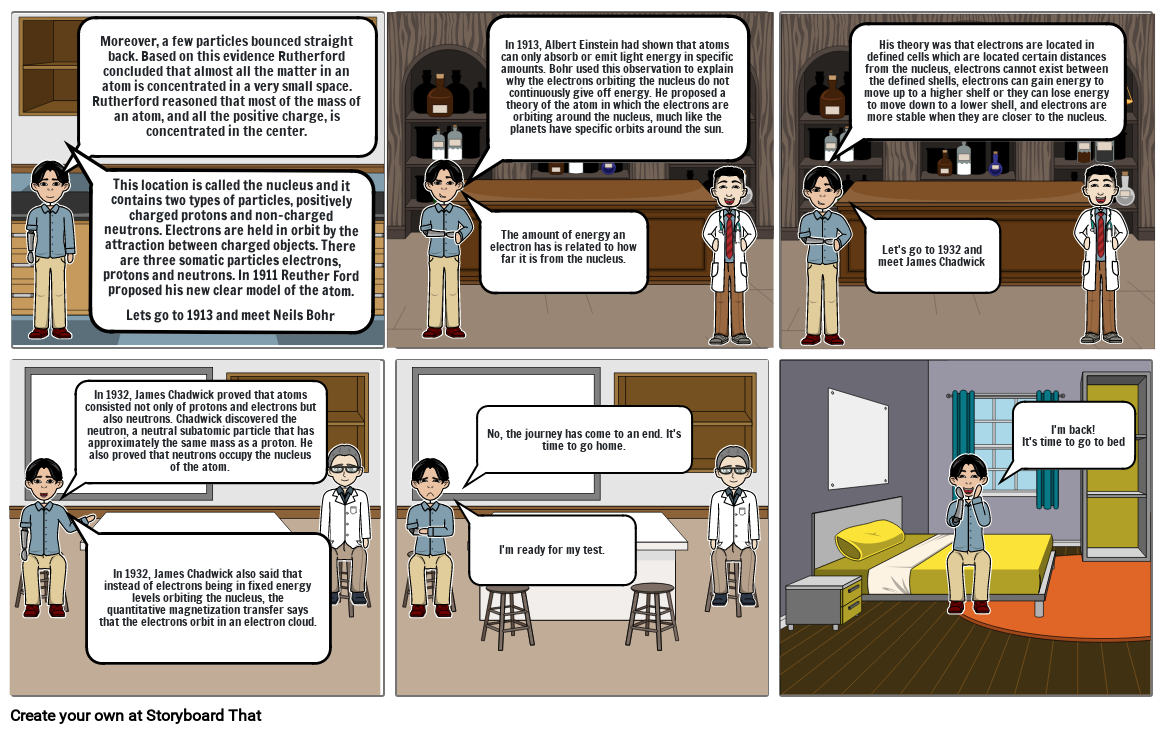Unknown Story

Storyboard Text
- Moreover, a few particles bounced straight back. Based on this evidence Rutherford concluded that almost all the matter in an atom is concentrated in a very small space. Rutherford reasoned that most of the mass of an atom, and all the positive charge, is concentrated in the center.
- This location is called the nucleus and it contains two types of particles, positively charged protons and non-charged neutrons. Electrons are held in orbit by the attraction between charged objects. There are three somatic particles electrons, protons and neutrons. In 1911 Reuther Ford proposed his new clear model of the atom.Lets go to 1913 and meet Neils Bohr
- The amount of energy an electron has is related to how far it is from the nucleus.
- In 1913, Albert Einstein had shown that atoms can only absorb or emit light energy in specific amounts. Bohr used this observation to explain why the electrons orbiting the nucleus do not continuously give off energy. He proposed a theory of the atom in which the electrons are orbiting around the nucleus, much like the planets have specific orbits around the sun.
- His theory was that electrons are located in defined cells which are located certain distances from the nucleus, electrons cannot exist between the defined shells, electrons can gain energy to move up to a higher shelf or they can lose energy to move down to a lower shell, and electrons are more stable when they are closer to the nucleus.
- Let's go to 1932 and meet James Chadwick
- In 1932, James Chadwick proved that atoms consisted not only of protons and electrons but also neutrons. Chadwick discovered the neutron, a neutral subatomic particle that has approximately the same mass as a proton. He also proved that neutrons occupy the nucleus of the atom.
- In 1932, James Chadwick also said that instead of electrons being in fixed energy levels orbiting the nucleus, thequantitative magnetization transfer says that the electrons orbit in an electron cloud.
- I'm ready for my test.
- No, the journey has come to an end. It's time to go home.
- I'm back!It's time to go to bed
Over 30 Million Storyboards Created

